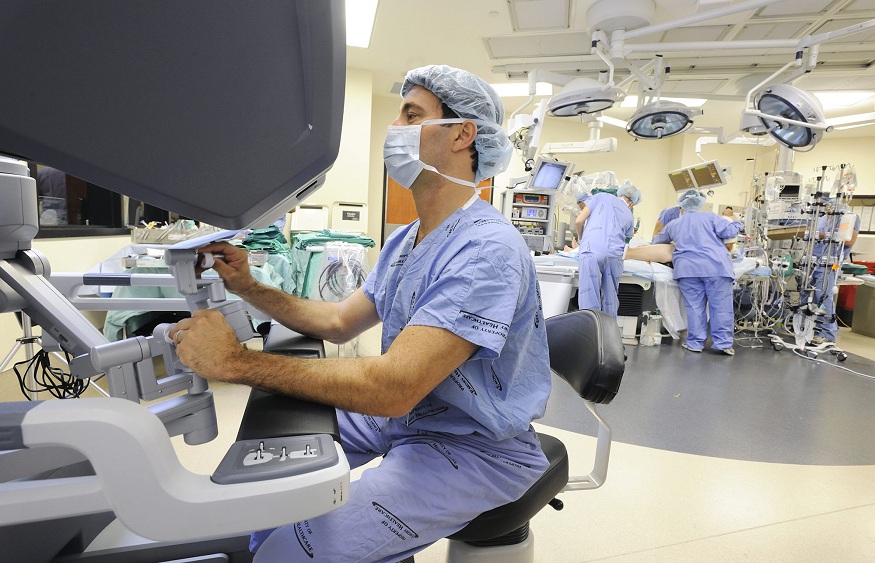Robotic heart surgery is a type of minimally invasive surgical procedure that is performed using advanced robotic technology. The goal of robotic heart surgery is to provide patients with improved surgical outcomes and a faster recovery process compared to traditional open-heart surgery. The following is an overview of what you need to know about robotic heart surgery:
How it works: Robotic heart surgery is performed using a surgical robot that is controlled by a surgeon. The surgeon uses a console to control the robot’s arms, which hold the surgical instruments. The robot provides the surgeon with a high-definition, magnified view of the surgical site, allowing for precise surgical incisions and greater control during the procedure.
Benefits: Robotic heart surgery offers several benefits compared to traditional open-heart surgery. These benefits include smaller incisions, less pain, less scarring, a shorter hospital stay, a faster recovery process, and improved surgical outcomes. In addition, robotic heart surgery may be a safer option for patients who are not candidates for traditional open-heart surgery due to other medical conditions.
Types of procedures: Robotic heart surgery can be used to perform a variety of procedures, including coronary artery bypass surgery, valve repair or replacement, and atrial septal defect (ASD) closure.
Risks and limitations: As with any surgical procedure, there are risks and limitations associated with robotic heart surgery. These risks and limitations include bleeding, infection, blood clots, and damage to surrounding tissues or organs. In addition, not all patients are suitable candidates for robotic heart surgery, and traditional open-heart surgery may be necessary in some cases.
Recovery: The recovery process following robotic heart surgery is typically shorter and less painful compared to traditional open-heart surgery. Most patients are able to return to normal activities within a few weeks, although full recovery may take several months.
In conclusion, robotic heart surgery is a type of minimally invasive surgical procedure that is performed using advanced robotic technology. Robotic heart surgery offers several benefits compared to traditional open-heart surgery, including smaller incisions, less pain, less scarring, a shorter hospital stay, a faster recovery process, and improved surgical outcomes. However, there are risks and limitations associated with robotic heart surgery, and not all patients are suitable candidates for this type of procedure. The appropriate choice of procedure will depend on the individual patient and the specifics of their medical condition.
Certainly, here is an example to illustrate what you need to know about robotic heart surgery:
A 65-year-old male patient with a history of heart disease presents to the clinic with symptoms of heart failure, including chest pain and shortness of breath. The patient reports that he has heard about robotic heart surgery and is interested in this option.
The healthcare provider performs a thorough evaluation, including a review of the patient’s medical history, a physical examination, and any necessary imaging studies. The healthcare provider determines that the patient is a suitable candidate for robotic heart surgery and explains to the patient how this procedure works.
The healthcare provider explains to the patient that robotic heart surgery is performed using a surgical robot that is controlled by a surgeon. The provider explains that the robot provides the surgeon with a high-definition, magnified view of the surgical site, allowing for precise surgical incisions and greater control during the procedure. The provider also explains the benefits of robotic heart surgery, including smaller incisions, less pain, less scarring, a shorter hospital stay, a faster recovery process, and improved surgical outcomes.
The healthcare provider explains to the patient that there are risks and limitations associated with robotic heart surgery, including bleeding, infection, blood clots, and damage to surrounding tissues or organs. The provider emphasizes the importance of considering all options and discussing the risks and benefits of each option with the patient’s healthcare provider.
In this example, the healthcare provider provides the patient with clear and concise information about robotic heart surgery. The provider explains how the procedure works and the benefits and risks associated with this type of surgery. The provider emphasizes the importance of considering all options and discussing the risks and benefits of each option with the patient’s healthcare provider to determine the appropriate course of action for the individual patient.





